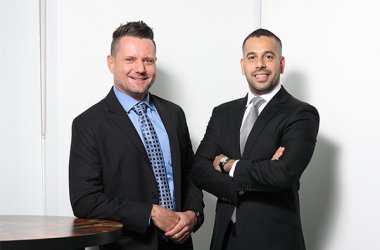
Aiming to emulate its success and dominance in the Chinese IT market, PC powerhouse Lenovo is looking to replicate the accomplishments in China and apply these in other parts of the emerging markets region.
Although the vendor continues to hold the number spot in market share in China, the same cannot be said about its global standing.
Key to executing its emerging markets plan according to the vendor is to attack the SMB and enterprise markets while at the same time protect its strong position in China.
If the vendor successfully duplicates its success in the Chinese market and adopts this strategy in other regions such as the Middle East, Africa, South Asia and South America, will have moved closer to its goal of becoming the number one PC brand in the world. Currently, Lenovo is in the fourth spot in terms of global PC market share and sixth in the emerging markets region.
Lenovo has been a force to be reckoned with in more mature markets in North America, Japan, Australia and Western Europe and it is this strength that it has in mature markets that the vendor is trying to bring to the largely untapped yet potentially viable emerging markets region.
To achieve this, Lenovo needs to have the right channel and go to market strategy in place, a broad product portfolio that suits the requirements of customers in this region and a comprehensive service support to complement its products offerings.
Emerging markets plan
Chen Shaopeng, Senior VP and President Emerging Markets Group (EMG) at Lenovo, says although the company’s business has been affected by the global economic downturn in more mature markets, its business in the emerging markets continues to remain solid.
Shaopeng says because majority of the world’s population (80%) lives in the emerging markets region but the PC penetration is about 12%, Lenovo has realised the business potential that this region holds. “Through our own research and that which is provided to us by global analyst firms, future PC demands will come from the emerging markets,” he says. “In developing a strategy that for the emerging markets, we take cognisance of the fact that fast GDP growth and PC demand will come from this region.”
Shaopeng emphasises that the strategy for the EMG on how it will address this region is a gradual yet focused approach as it would like to build a business and channel model that is sustainable and for the long term. “We are very cautious in our approach of enhancing our presence in the emerging markets,” he says.
He explains that the emerging markets push will revolve around Lenovo’s SMB and consumer range of products. “We would like to attach this region with an effective business model that has a lean cost structure,” he says. “We believe aside from the SMB and consumer focus, Lenovo has the advantage of bringing to different markets and countries products tailored to suit the needs of customers.”
Shaopeng acknowledges the challenges that lie ahead and says key to achieving anything significant in the region will orbit around building and enabling the channel and all the support structures that can help server the SMB and consumer markets.
Phased approach
The phased focus of the emerging markets will see countries such as India, Russia, Malaysia, Turkey, South Africa, North-west Africa and East Africa kick start Lenovo’s push and attack in the SMB and consumer space. Once the business model is successful in these countries, it will be adopted to other countries.
Shaopeng says that because in the past Lenovo had a lower focus and didn’t give the emerging markets outside China the attention it deserves before 2008. “We are changing this and in 2010, the focus will be at regional and in country level,” He says.
He adds that developing this enhanced coverage model for the EMG, Lenovo would like to have in place a sustainable and efficient business model. This, he says, will be achieved by recruiting the right channel partners and equipping them with the correct tools and support infrastructure.
In addition, Shaopeng says the company has taken a decision to expand and enhance its product portfolio coverage all in an effort of serving this region better. “Although we will be expanding our product line for SMB and consumer ranges, a rich product line takes time,” he says. “We know our portfolio coverage for this market needs to be enhanced. We have the advantage in that our research and development (R&D) is in-house and as such we are able to develop products that address the needs of our clients.
He explains that by offering channel partners more products, there will be in a stronger position to offer their end-user clients wider product options.
Shaopeng points out that one of the most successful strategies in China, has been Lenovo approach to reaching out to the rural population in that country. “We have a desktop PC which we have dubbed ‘the wedding series’ and it has been very popular among the rural population in China,” he notes. “We are hoping to pilot a similar range in India and Turkey in the Middle East and depending on the pilot we are hoping to extend this business model to most rural populations in other countries in the Middle East and Africa.”
Shaopeng says he is encouraged by what most Middle East governments are doing in building knowledge-based economies at which IT and IT services are at the forefront of this advancement. “The Middle East region remains one of the most strategic for our business as it’s also a supply hub for the rest of Africa,” he says.
Despite the global economic meltdown, Shaopeng observes that IT investments and e-Government projects in the Middle East region have continued. “With our enhanced coverage for emerging markets, we would like Lenovo products and technologies to be part of these IT pioneering efforts in this region,” he says.
End-to-end solution
Although Lenovo does have a server offering for China and the US markets, its lack of not having a complete end-to-end solution has made industry pundits to note that it maybe disadvantaged from its competitors. For starters, Lenovo in other markets other than the two markets partners with IBM as it preferred server brand.
Shaopeng says that while industry watchers are entitled to have this view, Lenovo does not see this scenario as a disadvantage. “Contrary to industry belief, Lenovo’s decision to delay the launch of its own server offerings in markets outside China and the US is purely a focus issue,” he says. “We are only getting our initiatives inline with the needs of the emerging markets region. It is important that we get our PC business right before introducing Lenovo branded servers. At the moment we are happy with the IBM’s offering.”
He reiterates that not having a Lenovo branded server doesn’t jeopardise Lenovo’s advances in the emerging markets. “It’s purely a focus issue and right now our focus is on the PC business,” he says. “Eventually as the market matures in the emerging markets Lenovo will introduce its own branded server.”
Shaopeng observes that as majority of young people in the emerging markets don’t have higher disposable incomes, there is need that Lenovo provides a product that suits their budgets. “From what we have come to learn even in China is that in a market where income in a given population is fragmented, the requirements for entry-level PCs is high,” he says. “We will be drawing on these experiences and adopting similar strategies depending on the market dynamics of each region and country.”
Looking ahead, Shaopeng is optimistic that Lenovo will grow its notebook business in the EMG by 20% in 2010. “We see a lot of potential with our entry-level desktop offering for the rural population and all-in-one machines for SMBs,” he says.
With enhanced coverage both from a product and market reach perspective, Lenovo’s quest to dominate the PC market space in the emerging markets region has only began. Whether it succeeds in replicating its successes in China only time will tell. For now Lenovo better not disappoint channel partners and end-users alike.
Not wanting to lag behind, Lenovo is using this time of global economic uncertainty to map out new strategies that will help it better serve the emerging markets. RWME’s Manda Banda reports.





